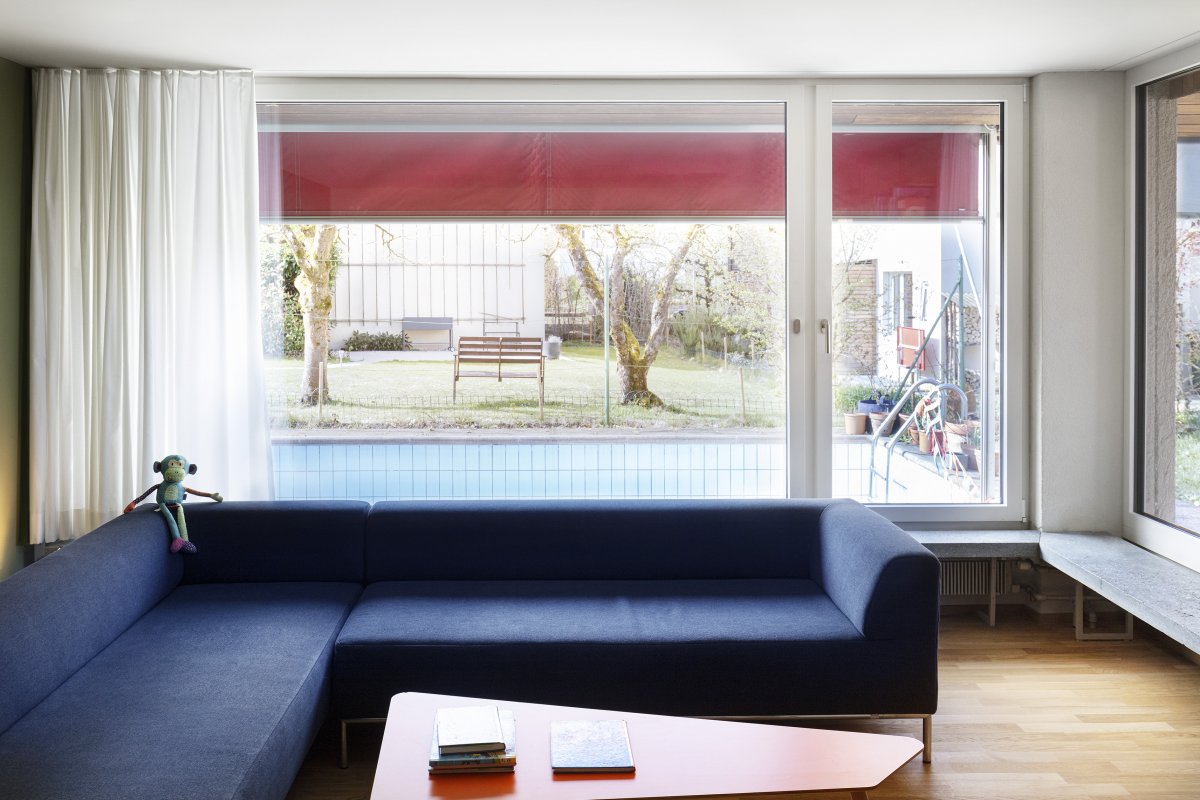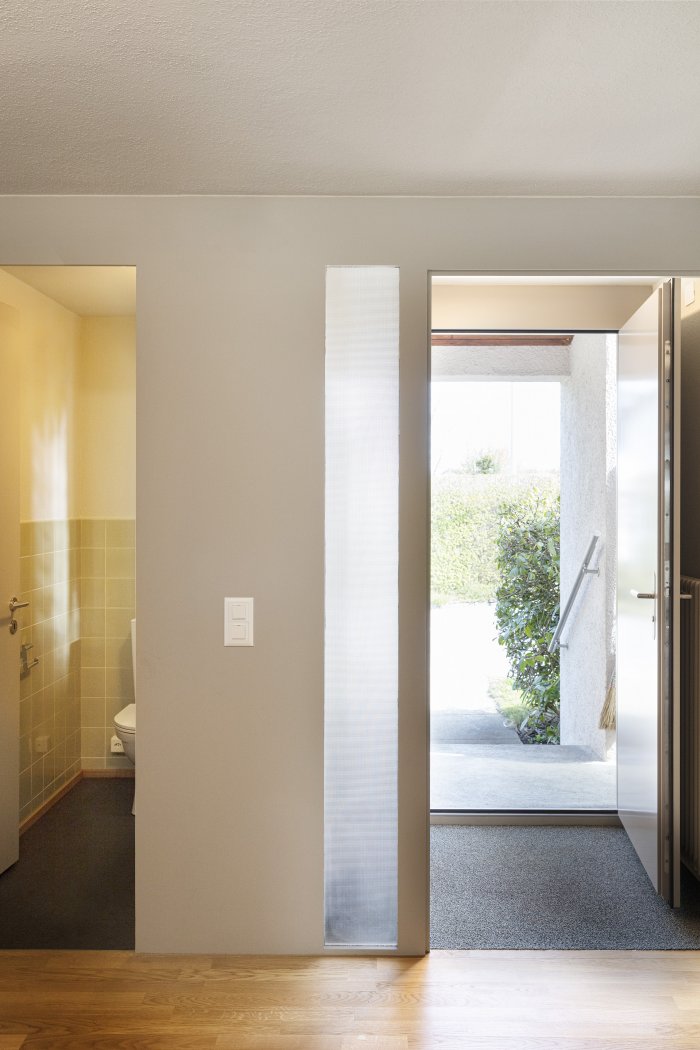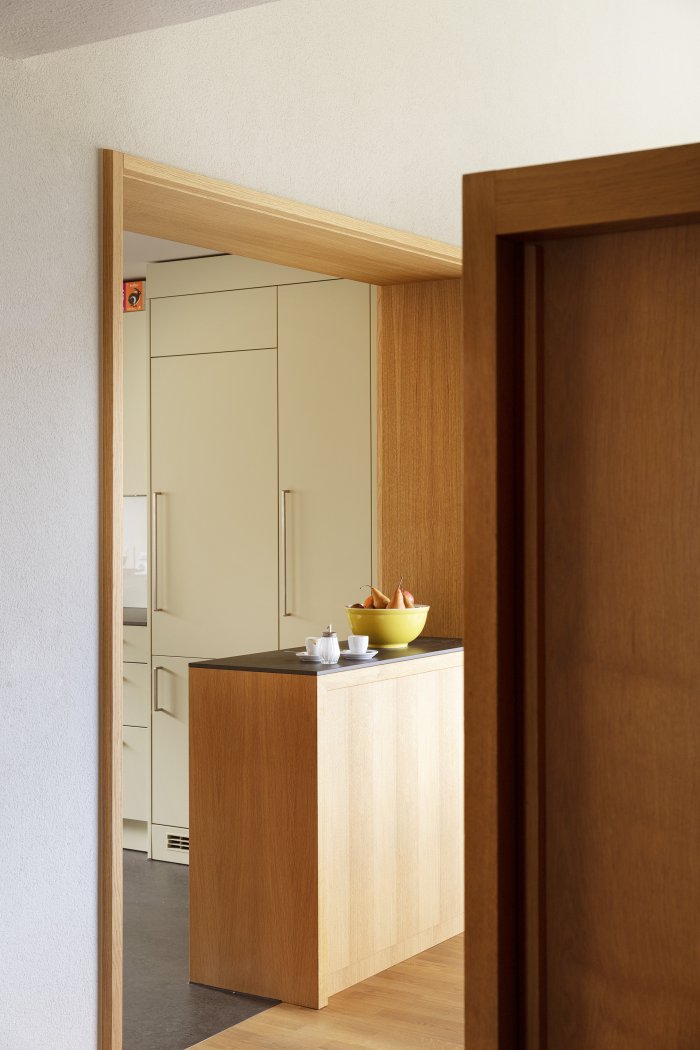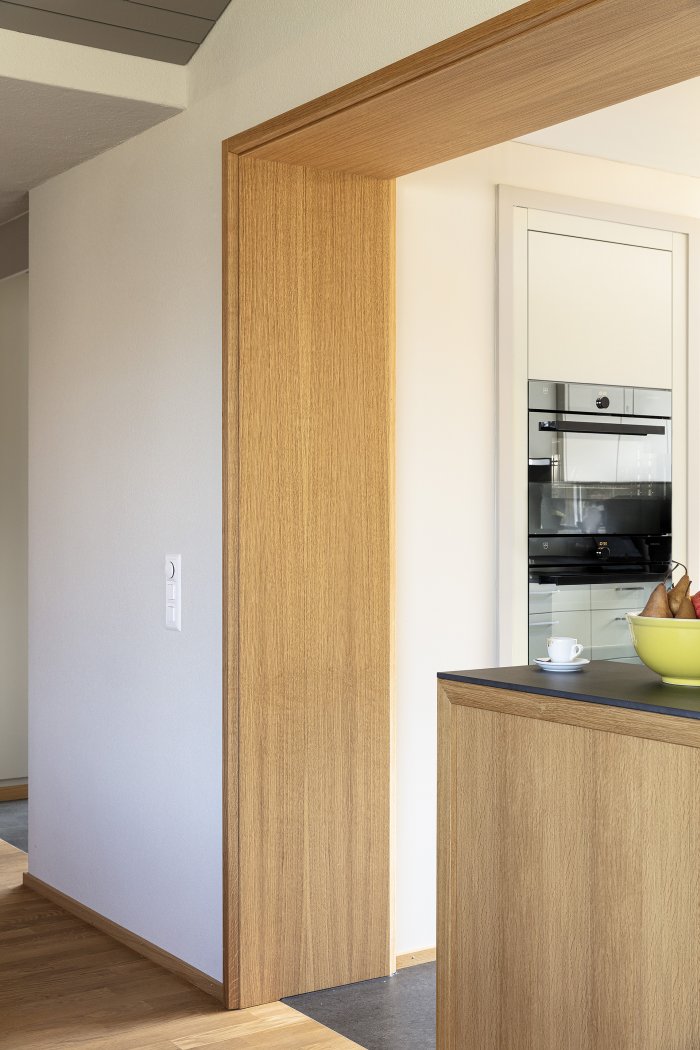The single-family house "Im Moos" was built in 1968 by architect Hans Kuhn for a civil engineer and his family. Hans Kuhn designed the Villnachern school building in the region, among many others and his buildings reflect the modest Scandinavian modernism that was gaining a foothold in Switzerland at the time. The style is defined by clear lines, contrasting with the generous use of spruce and oak wood, and rough plaster structures against exposed concrete surfaces with strong formwork patterns.
P147
Residential house "Im Moos", Windisch/AG
The architecture was largely in its original condition and showed a high design quality. Structurally, there were few defects to be located and overall there was a solid construction that had been well maintained.
However, the house, like many of its contemporaries, showed a greater energy-saving potential. The walls were weak, the roof was barely insulated and the outer shell was only marginally airtight. Thermal bridges were compensated for locally with a generous use of heating energy. Heating was provided by an oil-fired heating system.
The roof and basement were comprehensively insulated and the windows including the frames were replaced. Thermal bridges were lined with Aerogel. A special challenge was the replacement of the original large-format terrace windows. The old roller shutters had been replaced by venetian blinds, and new awnings were installed.
The client was keen to preserve the existing qualities of the house. Internally, changes were limited to the central living area. The kitchen was brought a little closer to the living space and the somewhat hermetic service hatch was replaced by an open buffet.
Existing fixtures and surfaces were largely retained, for example the tiles in the bathrooms. Defective areas were artfully replaced and adapted to the new sanitary appliances. An new oiled parquet floor was installed and the original white walls were painted in a soft "terre d'ombre".
About the energy concept
Several different options for heat generation were evaluated. The evaluation process retrospectively shed light on the challenges that will be faced to achieve the 2050 climate targets.
A PVA on the available roof area would have generated far more than the annual energy demand and the house would have been self-sufficient with a heat pump. The payback would have been less than 15 years even with an aesthetically pleasing, fully integrated PVA.
The big challenge, which unfortunately is still seldom discussed in public, is the storage of energy during the heating period when the sun is low. Even in the best case, the payback of a storage system is still over 40 years. However, technical improvements make us optimistic that in the medium term this will become a more viable option.
Currently, however, more and more PVAs are feeding electricity into the grid on sunny days. As long as this electricity cannot be stored at a favourable price, this will have a negative impact on the feed-in tariffs. Even here the incentive now drops to the almost symbolic 7 m2 that can be used to cover a daily cycle in summer.
In the context of this project, after consultation the building owner eventually decided on a pellet heating system. The heating oil tank had been generously dimensioned and offered space for a 7 tonne pellet store. In 15 years, energy storage will hopefully have advanced to the point where a heat pump can be operated with the stored electricity from a PVA.
Client
Private
Services
Overall management, architecture, construction management
Colaboration
Emina Rastoder, Jaime Gil Simoes
Planning team
Civil engineer: MWV Bauingenieure AG, Baden
Building physics: Amstein + Walthert, Zurich
Realisation June 2021 to October 2021





